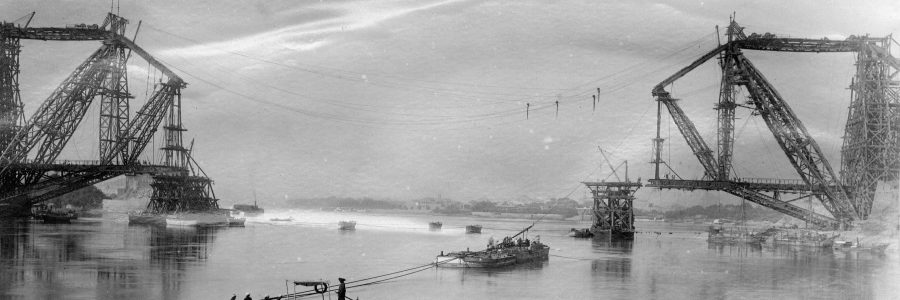
Construction of Lansdowne Bridge, Sukkur, 1885-1889
The Royal Commonwealth Society Library is delighted to have acquired at auction a stunning presentation album commemorating the opening on 25 March 1889 of the Lansdowne Bridge, which spans the Indus River between Sukkur and Rohri in the Sindh province of Pakistan (Y30244A). It is signed by the engineer who superintended the construction, Frederick Ewart Robertson (1847-1912). After articling with a British railway engineer, Robertson joined the Indian Public Works Department in 1868, working on the North Western State Railway. He went on to an extremely successful career, serving as Chief Engineer of the East Indian Railway, President of the Egyptian Railway Board and on the British Council of the Institute of Civil Engineers.
During the British colonial era, the North Western Railway had been extended to Sukkur by 1879, but relied upon a steam ferry to cross the Indus to Rohri, which was limited, slow and unwieldy. A crossing was considered essential to link Lahore with the major port of Karachi on the Arabian Sea, and the section where the Indus is divided by the island of Bukkur was chosen as the most advantageous. Bridging the smaller Sukkur channel was straightforward, since its rocky bottom provided a solid foundation for masonry piers, but spanning the wider Rohri channel was a more challenging task, since its silty bottom would not allow pillars to be employed.
Between 1872 and 1882 various designs were considered, before one by the British civil engineer Sir Alexander Meadows Rendel (1829–1918) was accepted. Rendel had been appointed consulting engineer to the East Indian Railway during the late 1850s. His work in India was distinguished by other major bridging projects, including the Upper Son Bridge of Patna, the Alexandra Bridge over the Chenab, the Hardinge Bridge over the Ganges, and the Empress Bridge over the Sutlej. Rendel’s design for Lansdowne Bridge featured two anchored cantilevers, each 310 feet long, carrying a suspended span of 200 feet in the middle. The girder contract was awarded to Westwood, Baillie & Co. of London, who assembled the 170 feet tall cantilevers in their yard, amazing spectators, before shipping the parts to India. When completed in 1889, the Lansdowne Bridge became the longest rigid girder bridge span in the world. Sadly six workers died during construction: four from falls and two from equipment falling upon them. In monetary terms, the total cost was roughly 2.7 million rupees.
Every stage of this arduous engineering project is thoroughly documented in the album’s 65 photographs, beginning with the bridging of the Sukkur channel in 1885 (Y30244A/2-6), and concluding with a two-part panorama of the completed Lansdowne Bridge (Y30244A/64-65). The bridge was formally opened by Lord Reay, the Governor of Bombay, who deputised for the Viceroy, Lord Lansdowne, after whom the bridge was named. Reay unlocked an ornamental padlock, designed by J. L. Kipling, Principal of the Mayo School of Art (and father of the famous writer Rudyard Kipling), releasing the iron gates which restricted access to the bridge. In Y30244A/63, Reay can be seen holding the padlock while Robertson holds the key. Robertson’s second in command M.S.N. Hecquet also appears in the photo. It should be possible to identify other members of the construction team in the album, such as Overseer A.D. Hecquet, Sub-Overseer Faiz Mahomed and assistant engineers P. Duncan, R. Egerton and J. Adam. Robertson was created a Companion of the Indian Empire in recognition of the monumental task of completing the bridge, and eventually went into partnership with Rendel in 1898.
The album was commissioned, probably by the North Western Railway, to commemorate the opening of the bridge. The vast majority of photographs were the work of G.W. Woodcroft of Bangalore. This copy was presented by Robertson to a G. Riley as indicated by a manuscript dedication, ‘in recognition of the assistance received from him.’ It has proved impossible as yet to trace Riley, who may have been a private contractor, perhaps employed by Westwood, Baillie & Co.
The Lansdowne Bridge still functions, although rail traffic was transferred to the great steel Ayub arch bridge, built alongside it between 1960 and 1962, so close in fact, that from a distance, the two appear as one structure. An image from another RCS collection records the final stages of its construction and it was opened by Pakistan’s President Muhammad Ayub Khan on 6 May 1962. The acquisition of the Lansdowne Bridge album reinforces the RCS’s existing strengths in railway history, and particularly in South Asia, exemplified by important early photographs of the North Bengal State Railway, Y3022S, and the Nilgiri Railway, Y3022TTTT, among others. The Lansdowne Bridge album (Y30244A) is currently receiving conservation before it will be digitised and made freely available on Cambridge Digital Library.

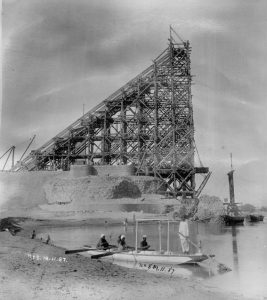
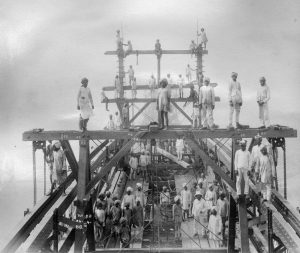

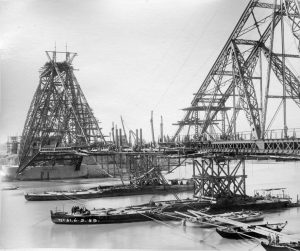
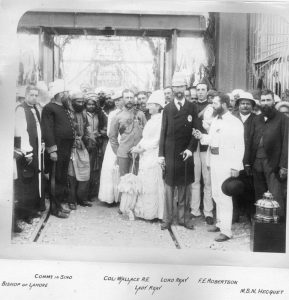
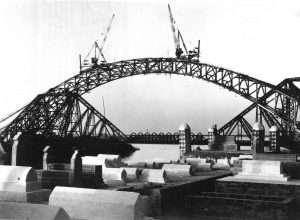
I was a member of the team of Engineers of M/s Gammon Pakistan,Subcontractors to Dorman,Long British Engineers; and in a small way, contributed to the design of Anchorage Reinforcement for this Ayub Bridge back in 1961 at the McLeod Road HQ of the Company.
S. Munir Ahmed,
Chartered Architect (London) Chartered Town Planner London), Urban Designer(Birmingham).
Was Civil Engineer Purvez Firozpurwala part of the team?
I am Imran Malik working Journalist working PTV news.
I want to file a story of Ayoob Bridge.
sir if you have any Pic and also your detail and Pakistani workers and Engineers please send me via whattsapp and call me than i contact you and add your memorable moments in my report
Regards
Malik Imran Shahid
+923009316450
imran.emedia@gmail.com
FB imranmalikptvsukkur
My whole evening was spent researching Landsdowne Bridge and finally I reached this blog that is so fascinating and informative. In my childhood days (In 1950s) I had the pleasure of riding trains passing over this bridge and I wondered how it was constructed and I inquired my father, a railways employee, about it and he gave interesting narration about this giant bridge construction and I wondered how in in 1880’s someone could design and built such a wonder.
Dear Cambridge Library staff
A strange story is doing rounds on Wikipedia that the rail traffic on the historic Landsdowne Bridge, constructed over the Sukkur Barrage, in Sindh, Pakistan in the 19th century was tested by a prisoner named Jamalo Khoso because the British were not sure if the bridge would hold. According to this legend, Khoso was promised a reprieve if he would drive a train across the bridge. As the story goes, he did so, was set free and upon his return to his native village, his wife welcomed him with a song “Ho Jamalo” which has become an anthem of sort in Sindh. Truly romantic, but rather too fantastic to be believed. Can you kindly let me know if there is any reference whatsoever to this yarn in the British archives. Grateful
Shahzad Sharjeel
Hello
It is query that had any Indian before partition involved with construction of bridge over shakkar village now in Pakistan.
It was heard that sardar Hari Singh Mistry was one who involved in that project.
Any if have some clue please inform.
Excellent work by the then engineers . Remarkable construction .
I am a great fan of the British works in india. The Lansdowne Bridge is the greatest piece of art I have seen in Pakistan so far. I wish I could see British rule in india before independence
Can any one tell the name of the driver who firstly crossed the railway engine at ayoub railway bridge.
If you do find out, please let us know, so we can add the information to our records.
John
Jamalo Sheedi was born in Sukkur, then in the Bombay Presidency of British-occupied India under the company rule of the British East India Company, but today in the Sindh Province of present-day Pakistan. He was sentenced to execution by hanging, by British East India Company officer John Jacob in Sukkur, probably in 1889, the year Jacob briefly became Acting Commissioner of Sindh before being deployed to Persia later the same year. Jamalo (as he is conventionally called) was held in jail near the Sukkur Bridge, which had recently been built for trains by the English, but was untested. The government of Sindh announced that whoever test-drove a train across the bridge would be given a prize. Jamalo sent a letter to Jacob, offering to perform the train crossing, on the condition that he be released from jail and his sentence if he crossed safely. He did cross safely, was freed, and was given a prize by the East India Company’s governor of Sindh. His wife composed the “Ho Jamalo” song about his exploit, and it has since become famous in the region.[1]
FOR MORE INFO PLEASE WRITE “HO JAMALO”
Very many thanks for sharing your research!
John
any evidence supporting this Jamalo Sheedi story ? share to be aware
So it is a true story and not a myth?
One problem with this account is that John King died in 1858 and, secondly, the British East India Company had surrendered any governing role in India to the British Government in 1859 and certainly had no role in hanging people in 1889, or in giving prizes. The railway only ‘commenced’ construction by the Scinde Railway from Karachi in 1858, the year King died, and was only about 100 miles out from Karachi by 1861 – so it is not likely to be a confusion of dates. The railway was taken out of private hands by the North West State Railway in 1885. Maybe the story still has some relationship with India under British government control in 1889 – but while I’d love to be proved wrong (because it is a great legend) it sounds extremely unlikely in the context of the very formal rule of law framework which was quite firmly established by the 1880s.
yes it’s a true story my mom used to tell me this same story ever since I was a child
this is for a school project. does anyone know what materials were used to bridge the bridge? as in what was used to build the support factors. the cantilever arches etc. if so plz email me at ramshan1@educbe.ca
I believe my wife may have been a descendent of FE Robertson. We know she had ancestors that were engineers in India/Pakistan and worked on railroad systems. She passed away a couple of years ago and I have been going through some of the things that were left to her by her father. One of the things is a silver gravy boat inscribed with Sukkur Badminton Singles 1887 on one side with crossed racquets and crest on the other. Any additional info or verification would be appreciated.
Thanks
G. Holt
Alberta, Canada
Do you know the actual names of M S N and AD Hecquet?
Greetings Cambridge University staff,
My Great grandfather was A. D Hecquet. I would be incredibly grateful if there is anyway to identify which of the gentlemen photographed is him.
Regards,
Phil Vieyra
We must be related: MSN Hecquet is my Great Great Grandfather!